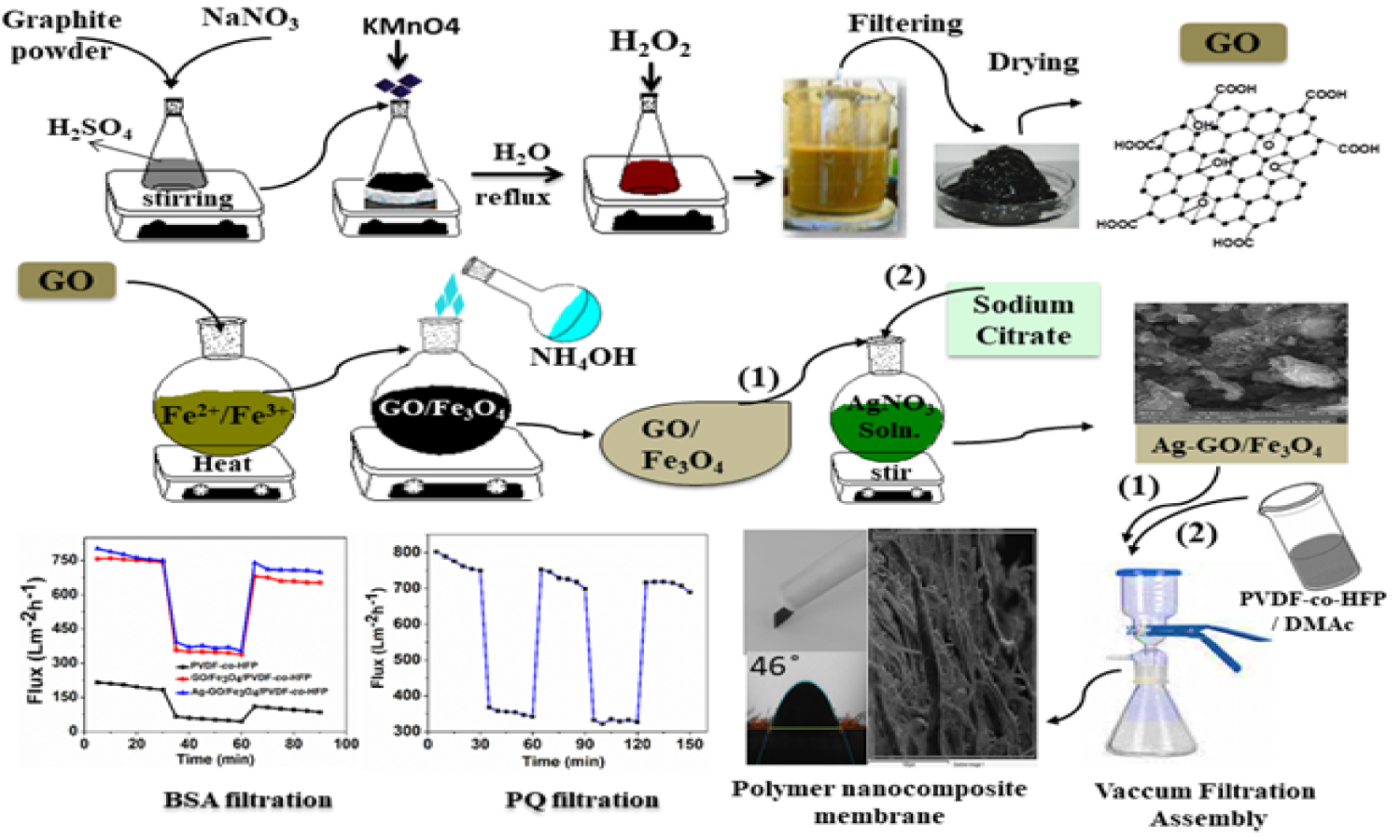High gas barrier properties of novel urea-carbamate functionalized polydimethylsiloxane composites star-crosslinked by graphene oxide
Yuwei Gu, Lijun Chu, Quanxiao Dong, Peng Qiu, Stephen Jerrams, Shui Hu, Shipeng Wen
Vol. 18., No.9., Pages 931-941, 2024
DOI: 10.3144/expresspolymlett.2024.70
DOI: 10.3144/expresspolymlett.2024.70
GRAPHICAL ABSTRACT

ABSTRACT
Polydimethylsiloxane has the characteristics of low-temperature flexibility and excellent aging resistance. However, high molecule mobility and weak interactions between PDMS molecules result in poor mechanical strength and deficient gas barrier properties of PDMS composites. Herein, diamino-polydimethylsiloxane (PDMS) was reacted with 4,4′-diphenylmethane diisocyanate (MDI) and 1,4-butanediol (BDO) to form urea-carbamate functionalized PDMS (MDI-PDMS-BDO) with different hard segment contents. Furthermore, the modified graphene oxide (iGO) was obtained by the reaction between graphene oxide (GO) and MDI. iGO was further introduced into the functionalized PDMS to prepare iGO/urethane-urea functionalized PDMS composites (iGO/MDI-PDMS-BDO). An ordered structure was formed by the hard segments of the MDI-PDMS-BDO functionalized PDMS. A strong urea-based interface was also obtained between iGO and functionalized PDMS. iGO became the cross-linking center in the iGO/MDI-PDMS-BDO composites. Due to the ordered structure of hard segments and the iGO network formed in the PDMS composite with only 0.07 wt% iGO, the tensile strength and gas barrier properties of the iGO/MDI-PDMS-BDO composite were increased by 18 times and 64.27%, respectively, compared with pure PDMS.
RELATED ARTICLES
Hafsa Ilyas, Syeda Huma H. Zaidi, Salwa D. Al-Malwi, Muhammad Yasir, Muhammad Usman, Seemab Parvaiz, Muhammad Siddiq
Vol. 19., No.10., Pages 1038-1052, 2025
DOI: 10.3144/expresspolymlett.2025.78
Vol. 19., No.10., Pages 1038-1052, 2025
DOI: 10.3144/expresspolymlett.2025.78

Magnetically active membranes based on GO/Fe3O4and Ag-GO/Fe3O4have been synthesized via the resin-infiltration technique, achieving significant improvements in rejection and antifouling properties, followed by their characterization by X-ray diffraction (XRD), Fourier transform infrared spectroscopy (FTIR), scanning electron microscopy (SEM), energy dispersive X-rays spectroscopy (EDX) and thermal gravimetric analysis (TGA). The increasing demand for efficient water purification technologies is challenged by low separation efficiency, poor resistance to fouling, and limited tunability in dynamic environments, as well as low rejection performance. This study addresses the research gap by developing and evaluating GO/Fe3O4and Ag-GO/Fe3O4membranes to enhance water treatment performance through improved rejection rates and antifouling capabilities. It exhibits separation efficiency, fouling resistance, and high thermomechanical stability with the added advantage of magnetic responsiveness – a combination that addresses multiple persistent issues in membrane-based water treatment. GO/Fe3O4 and Ag-GO/Fe3O4 improved the flux recovery ratio of pristine PVDF-co-HFP membrane from 50.8 to 89.9 and 92.3%, while the rejection % of paraquat (PQ) herbicide increased up to 92.7%. This research is important because magnetically active membranes do not need external magnetic fields to move the magnetic particles to the membrane’s surface.



